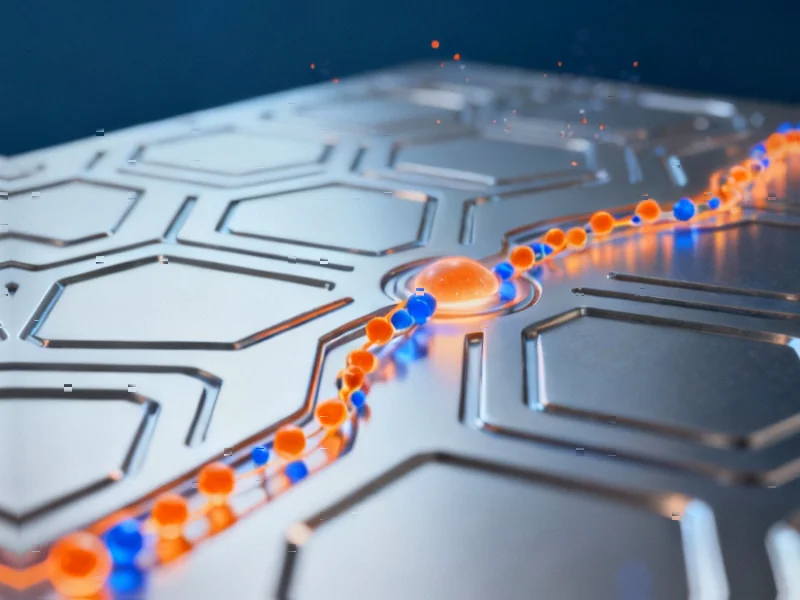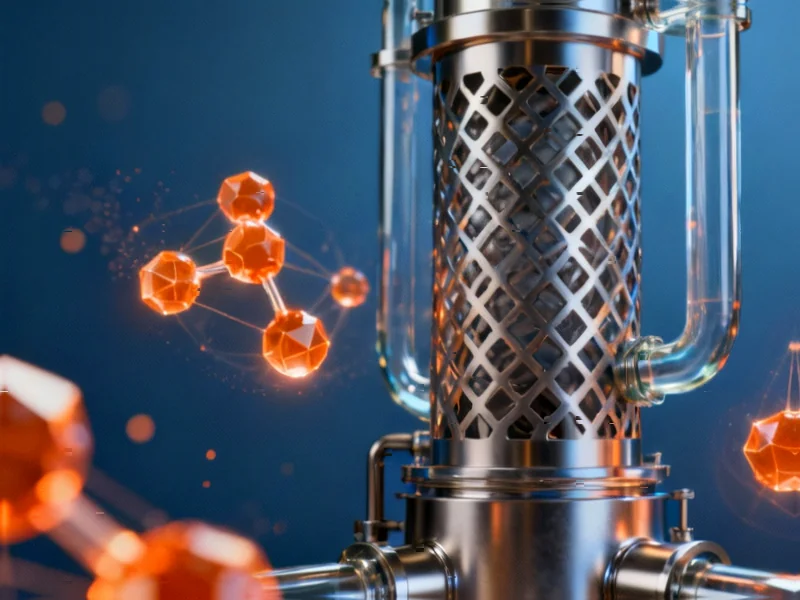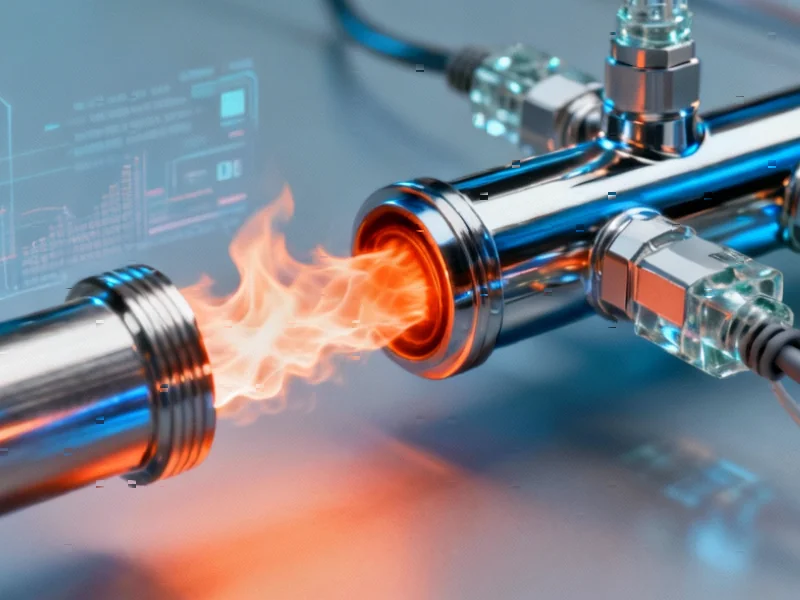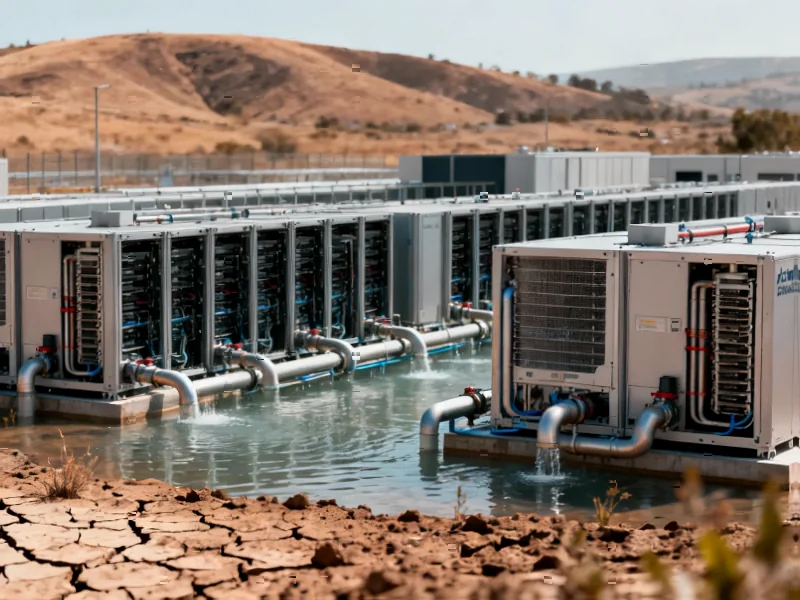The Evolving Understanding of Electrocatalytic Reactions
For decades, scientists have sought to understand what makes certain materials effective catalysts for producing renewable fuels and chemicals. The traditional view focused primarily on how strongly reaction intermediates bind to catalyst surfaces. This perspective, rooted in the Sabatier principle, suggested an optimal “Goldilocks zone” where binding is neither too strong nor too weak. The resulting volcano-shaped activity plots have guided catalyst development for hydrogen evolution reaction (HER) and carbon dioxide reduction reaction (CORR) for generations.
Table of Contents
- The Evolving Understanding of Electrocatalytic Reactions
- The Hydrogen Binding Energy Paradigm and Its Limitations
- The Emerging Role of Hydroxyl Species in Alkaline Media
- Cation Effects: Beyond Simple Electrostatic Interactions
- Electrolyte Engineering for Carbon Dioxide Reduction
- Implications for Renewable Fuel and Chemical Synthesis
However, recent research reveals this picture is incomplete. The surrounding electrolyte—including pH, cations, and surface structure—plays a far more complex role than previously appreciated. As we transition toward renewable energy systems, understanding these intricate relationships becomes crucial for designing efficient electrochemical processes for fuel and chemical synthesis., as covered previously
The Hydrogen Binding Energy Paradigm and Its Limitations
The hydrogen binding energy (HBE) theory emerged as the dominant framework for understanding HER activity. This approach, refined through d-band theory calculations, successfully explained why platinum sits at the peak of HER volcano plots. Pt binds hydrogen atoms with just the right strength—similar to the H-H bond in molecular hydrogen—enabling efficient proton reduction and hydrogen molecule formation., according to additional coverage
Yet this elegant theory faces challenges when confronted with experimental reality. According to computational models using the computational hydrogen electrode, H* binding energies shouldn’t change with pH or electrolyte composition. However, multiple experimental studies have demonstrated that HER activity on platinum-group metals consistently decreases as pH increases from 0 to 13. This discrepancy suggests our understanding of the electrochemical interface remains incomplete.
The Emerging Role of Hydroxyl Species in Alkaline Media
As researchers probed deeper, they discovered that hydroxyl species (OH*) play a crucial role in HER kinetics, particularly in alkaline environments. On single-crystal platinum surfaces, the traditional H* binding energy descriptor fails to explain why Pt(111) exhibits the highest HER overpotential among Pt facets in alkaline media, despite showing minimal shift in H* adsorption features with pH., according to recent research
The breakthrough came from recognizing that OH* influences both surface site availability and hydrogen intermediate adsorption. Studies on modified Pt(111) surfaces decorated with Ni(OH)x species demonstrated enhanced HER activity due to created interfacial sites with high OH* affinity. These sites promote water dissociation—the critical Volmer step in alkaline HER—where water molecules split into H* and OH*., according to additional coverage
Researchers have since proposed OH* binding energy as an additional descriptor for HER under alkaline conditions, revealing another volcano-shaped relationship. The most active catalysts balance favorable hydrogen adsorption with moderately strong OH* binding to facilitate water dissociation while avoiding site blocking by overly strong OH* adsorption., according to market developments
Cation Effects: Beyond Simple Electrostatic Interactions
Perhaps the most surprising development in electrocatalysis research involves how alkali metal cations influence reaction rates and selectivity. The conventional wisdom viewed cations as mere charge carriers, but evidence now shows they actively participate in interfacial chemistry.
Through studies on stepped Pt surfaces across pH values 1-13, scientists discovered that hydrated alkali metal cations form interfacial clusters with OH* species. The concentration of these clusters increases with cation hydration energy, following the trend Li⁺ ≫ Na⁺ > K⁺ > Cs⁺. Smaller cations like Li⁺ and Na⁺ generally promote HER over larger cations by better stabilizing the OH* intermediate, thereby enhancing water dissociation kinetics.
However, the cation effect isn’t universal. Contrasting observations across different surface structures highlight the complexity: Pt(111) shows varying cation sensitivity depending on modification, while stepped surfaces exhibit pronounced cation effects. This suggests cations preferentially interact with step edges rather than terraces, and their impact involves multiple cooperative factors beyond simple OH* stabilization.
Electrolyte Engineering for Carbon Dioxide Reduction
The importance of electrolyte effects extends beyond hydrogen production to carbon dioxide conversion. For CORR, CO* binding energy serves as the primary activity descriptor, with copper’s intermediate CO binding enabling its unique ability to produce hydrocarbons and oxygenates.
The role of cations in CORR reveals even more dramatic electrolyte effects. Research has demonstrated that CORR effectively shuts down on silver, gold, and copper electrodes in the absence of cations at relevant operating potentials. This striking observation underscores how cations stabilize CO2 reduction intermediates through direct electrostatic interactions, enabling CO* formation and subsequent conversion to valuable products.
Designing efficient CORR systems requires engineering both the electrode surface and electrolyte composition. Optimal systems combine surfaces with active sites that favorably adsorb CO* and promote carbon-carbon coupling with electrolyte structures that balance water dissociation kinetics to hydrogenate intermediates without favoring competing HER.
Implications for Renewable Fuel and Chemical Synthesis
The evolving understanding of electrolyte effects has profound implications for developing electrochemical synthesis technologies:
- Catalyst design must account for operational environment—a catalyst optimized for acidic conditions may perform poorly in alkaline media
- Electrolyte composition becomes a design parameter—strategic selection of cations and pH can enhance activity and selectivity
- Interface engineering requires multi-scale approach—atomic-scale surface structure, nanoscale interfacial water, and macroscale electrolyte all contribute to performance
- Computational models need refinement—current DFT calculations often miss crucial electrolyte effects observed experimentally
As research continues, the line between catalyst and electrolyte blurs, revealing an electrochemical interface far more dynamic and complex than previously imagined. This paradigm shift opens new avenues for optimizing renewable fuel production and chemical synthesis through holistic design of both solid catalyst and liquid electrolyte.
Related Articles You May Find Interesting
- Breakthrough Temperature Sensor Mimics Human Skin Sensitivity for Smart Comfort
- OpenAI’s ChatGPT Atlas Redefines Web Browsing with Integrated AI Assistant
- Philips Challenges Apple with Budget-Friendly 5K Professional Monitor Offering P
- Snapchat Democratizes AI Creation: Imagine Lens Now Free for All US Users
- Samsung’s Galaxy XR Enters Mixed Reality Arena: A Deep Dive into Features, Perfo
This article aggregates information from publicly available sources. All trademarks and copyrights belong to their respective owners.
Note: Featured image is for illustrative purposes only and does not represent any specific product, service, or entity mentioned in this article.



